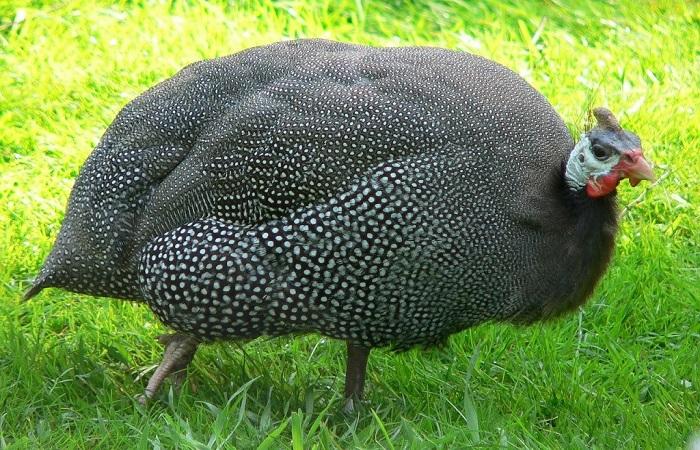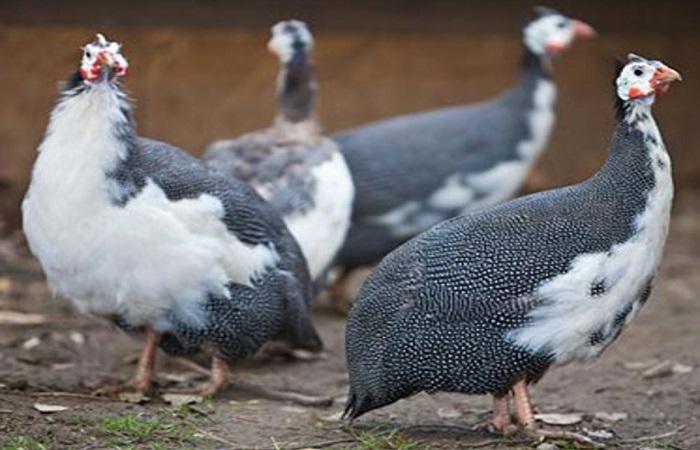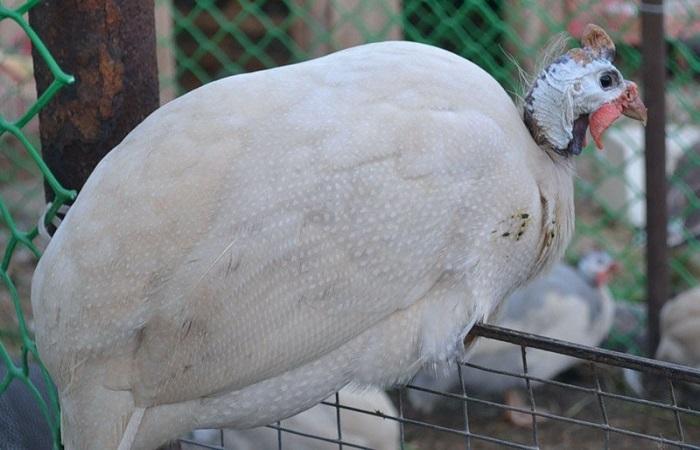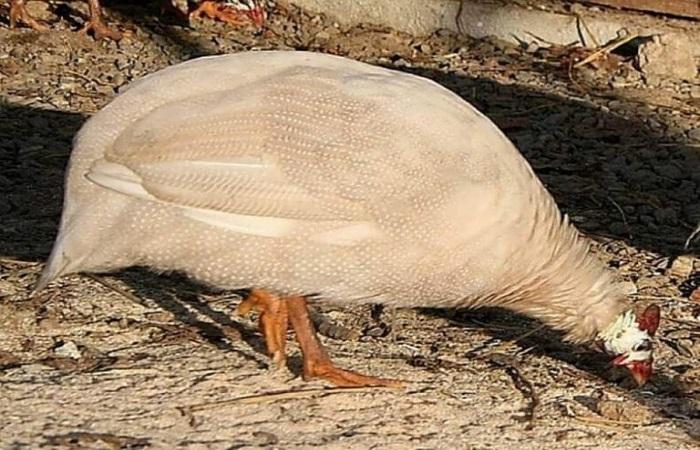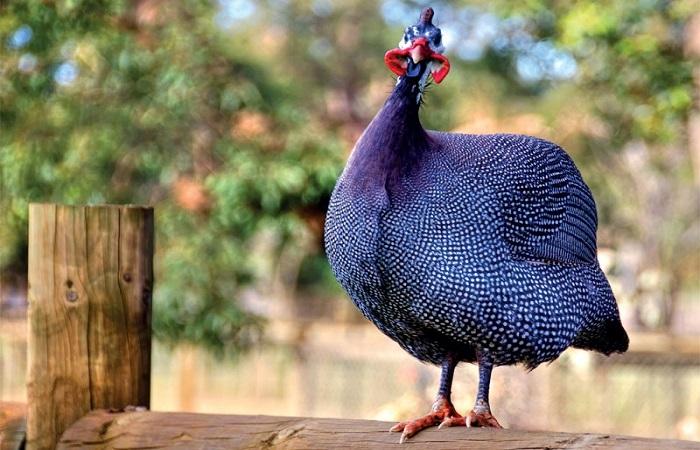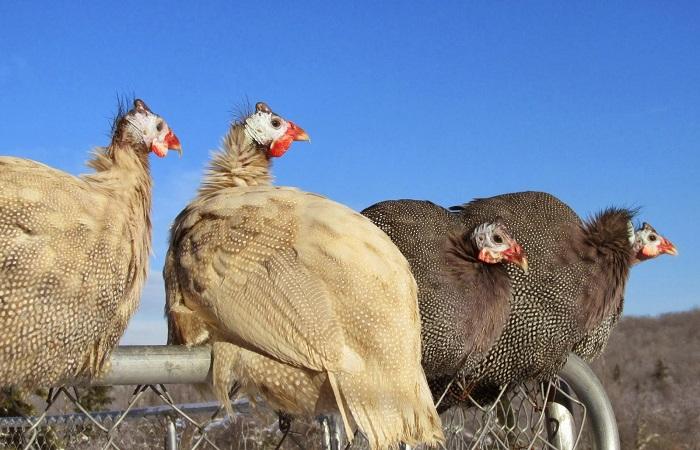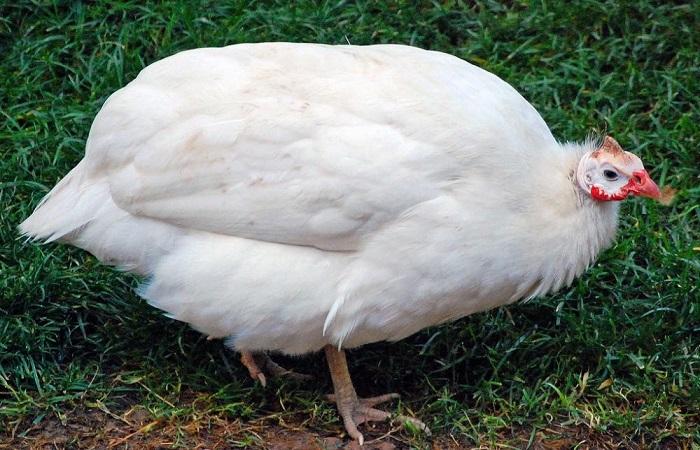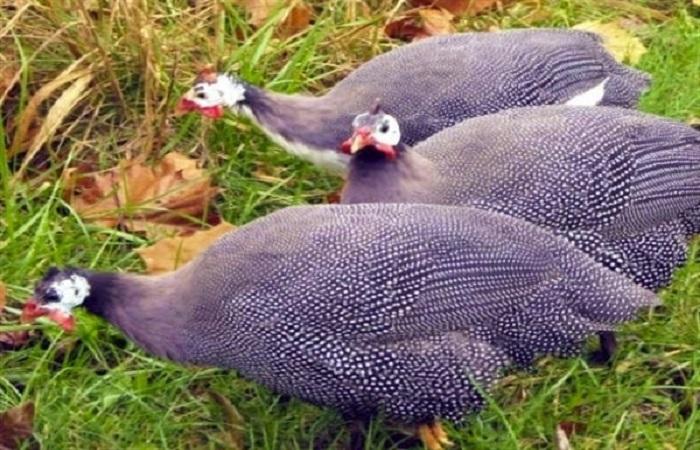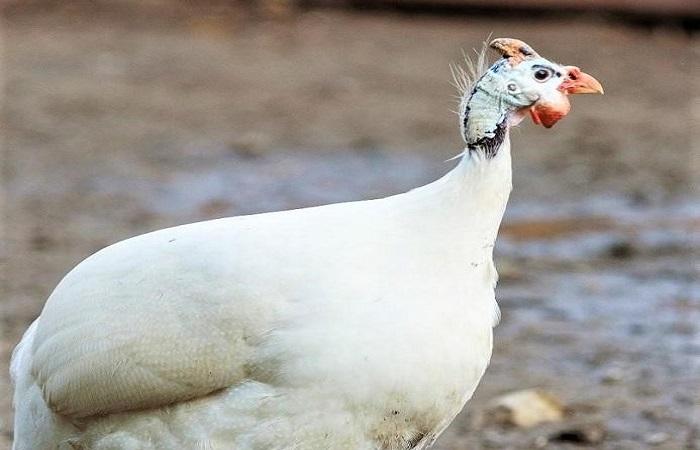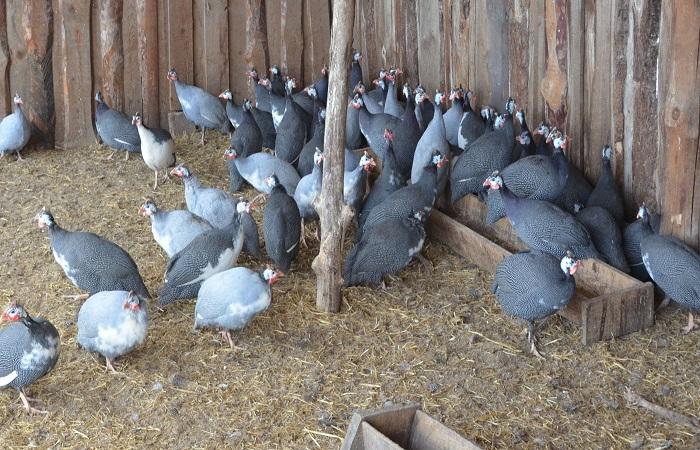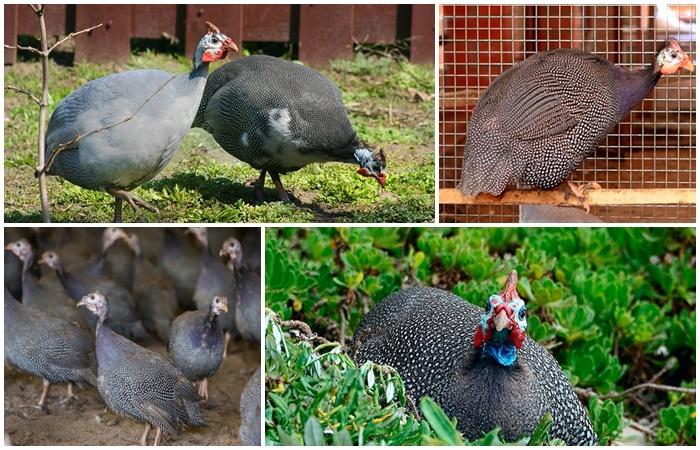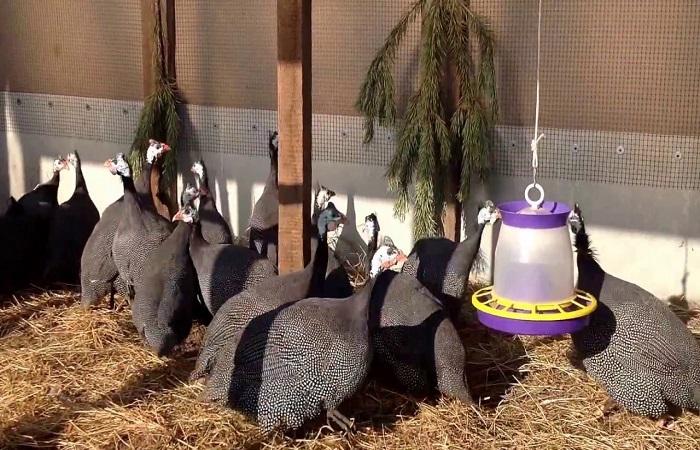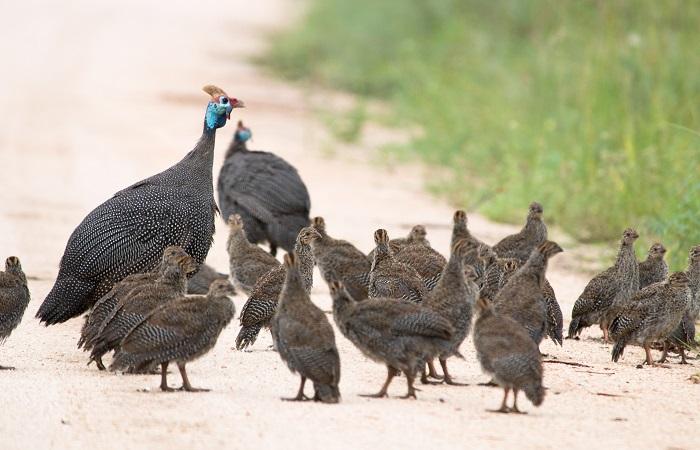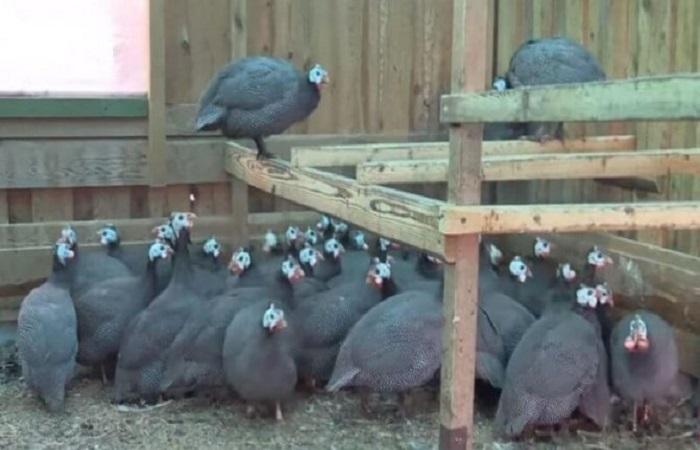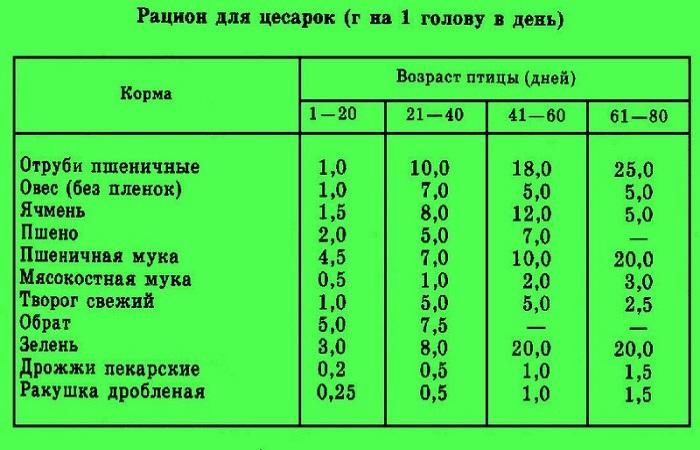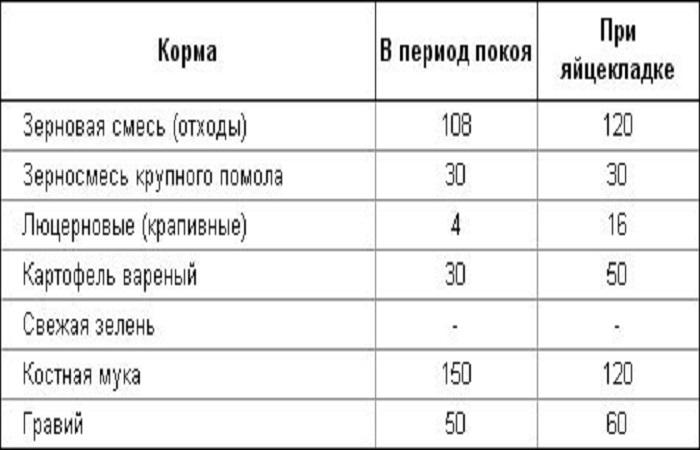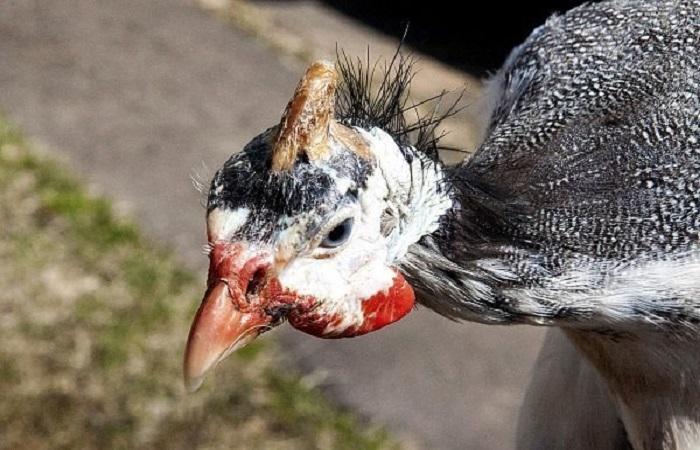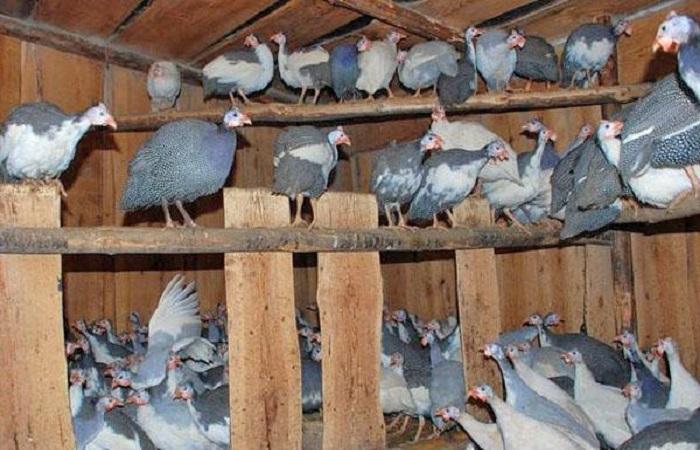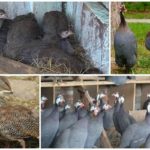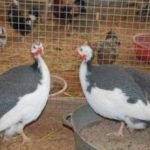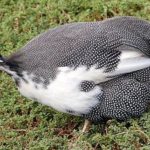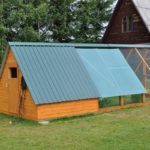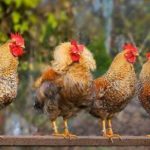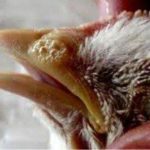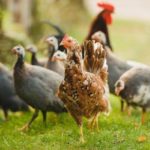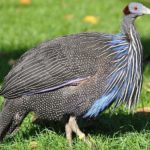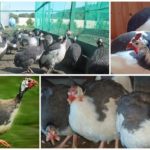Anyone can breed such an exotic bird as a guinea fowl. It is unpretentious, easy to feed and can tolerate frost well. It is chosen for its high quality eggs and dietary lean meat. The bird is fully adapted for home keeping. The main thing is to adhere to the basic rules for breeding guinea fowl at home, provide free range, food, and a heated room.
- Popular breeds
- Subtleties of keeping birds
- Arrangement of poultry house and walking yard
- Living conditions
- Features of caring for guinea fowl
- How is the parent stock formed?
- Diet
- Bird breeding rules in detail for beginners
- At what age are guinea fowls slaughtered for meat?
- Frequent illnesses
- Is the business profitable?
- Possible problems
Popular breeds
Guinea fowl belong to the category of large birds; the weight of adult individuals varies from 1.5 to 2 kg. For one guinea fowl, the owner spends from 3 to 3.5 kg of feed per 1 kg of weight. There are several varieties of breeds, but the common ancestor here is the common guinea fowl. Among the main types:
- Grey-speckled. The plumage color is gray with white specks. The body is oval. The weight of females is 1.5-1.6 kg, males are 1.8 kg. Sexual maturity occurs at 8 months. The average egg production is 90 eggs, the weight of each is 45-47 g. The color of the meat is bluish, the taste is high.
- Zagorskaya. This is one of the most valuable breeds. Guinea fowl are distinguished by their large size and high egg production - up to 140 eggs per year. The weight of the female is 2 kg, the male is 2.5 kg. A characteristic feature is a white breast. The bird is unpretentious in keeping and is not afraid of either cold or heat. The meat is high quality, the eggs can be stored and transported for a long time. To breed this breed, a Moscow rooster and a gray-speckled guinea fowl were used.
- White Siberian. The breed is relatively new, distinguished by its white color with a slight splash. Its popularity was brought by its high egg production rates - up to 170 eggs per year. The weight of the female is about 2.1 kg, the male is 2 kg.
- Creamy. In appearance, the cream guinea fowl is very similar to the Siberian white. It is only distinguished by its smaller size and rich dark color of the carcass. Basically, the color of the guinea fowl is white-cream, but there is also a yellowish tint. The weight of an adult female is 1.65 kg, a male is 1.75 kg. Egg production rates vary from 80 to 100 eggs throughout the year. The color of the eggs is also cream, each weighs from 44 g. Their hatchability percentage is 70%.
- Blue. The breed is less common.She has an interesting appearance: blue color, very small head compared to her body, and has a pink crest. Egg production rates are good - 100-150 eggs per year from one guinea fowl. The weight of one egg is almost 45 g. The fertilization rate reaches 75%. The breed is suitable for both artificial and natural reproduction.
- Yellow. The color of the guinea fowl fully corresponds to the name of the breed - pale yellow. Only at the neck and on the chest is a yellow-red tint visible. An adult female weighs about 1.8 kg, a male – 1.5 kg. In one year, a guinea fowl can produce up to 100 eggs, each weighing 45 g.
- Volzhskaya white. Productive individuals of the white Siberian guinea fowl were used for breeding work. Breeders are attracted by the high taste of meat and excellent presentation. The guinea fowl is not demanding on nutrition and can quickly gain weight. Disadvantages include poor egg production and difficulties in identifying sex. The bird has short legs, an elongated body, and a small head. The beak and wattles are pink, and the plumage ranges from white to cream. There are specimens with dark colored feathers. The weight of the female is 1.9 kg, the male is 1.6 kg. Over the course of a year, a bird’s egg production can reach 100 eggs. Their hatchability rate is almost 80%.
- Blue lilac. A characteristic feature of the breed is the color of the feathers - a pronounced indigo color with white splashes. There is severe pubescence in the neck and chest area. An adult female weighs 2.5 kg, a male – 2 kg. The advantage of the breed is its high egg production rates, which amount to 150 eggs in one year. Each weight is almost 45 g. Thanks to their hard shell, the eggs are suitable for long-term storage and transportation.
- White. Guinea fowl of this breed are distinguished by their white color; there are no inclusions or spots on the feathers.The beak and earrings are unevenly colored, deep pink at the base and white towards the end. The weight of a male is about 1.5 kg, and that of a female is 1.8 kg. Egg production rates in an adult guinea fowl vary from 90 to 100 eggs per year, each weighing 42-45 g. The shell is dense, there are many small dots.
Subtleties of keeping birds
Breeding guinea fowl at home is not difficult; even a beginner can handle them. The main thing is to take into account that these are birds with increased activity, freedom-loving birds, accustomed to grazing in meadows. To keep them productive, you should organize a walk in the open air.
Guinea fowl can also stay in an enclosed space, but then you should not expect high rates of egg production or fertility.
In order for the sexual activity of individuals to be at a sufficient level, space is needed for their mating games.
Arrangement of poultry house and walking yard
To properly raise guinea fowl at home, breeders set up a room where the birds will rest and spend the night. An existing outbuilding is suitable for these purposes; if it is not available, a new one will be erected. The main thing is that the poultry house is insulated and located on a hill, otherwise it will be damp in the fall and spring. And the presence of mold will only provoke the development of dangerous diseases in poultry.
To prevent mold from appearing on the floor, it is treated with slaked lime. Spent per 1 sq. m of area 1 kg of the drug. After all the preparatory measures, a layer of straw or dried grass or sawdust is laid. Perches for guinea fowl are optimally placed at a height of 50 cm from the floor. It is necessary to take into account that it is permissible to place only 5 females per 1 m of perch.
In the room you need to provide bedding that will effectively absorb moisture and keep you warm in winter. For guinea fowls who like to range freely, an appropriate enclosure is required. It is enclosed with a metal mesh; the height of the structure should be up to two meters. If it is lower, the birds will fly over calmly. In addition, it is necessary to provide a canopy that will save the guinea fowl from direct sunlight and precipitation.
Living conditions
Anyone can keep exotic birds at home if they maintain a comfortable microclimate indoors and install drinking bowls and feeders correctly. Guinea fowl should have free access to them. Birds especially need clean water during the hot season, otherwise they will simply overheat.
In the poultry house, water and feed containers should also be cleaned with disinfectants once a month. Where guinea fowl live should always be dry and clean. If you plan to keep not one, but several breeds, then the premises should be zoned. These birds have a highly developed sense of competition.
To increase egg production rates, the area is calculated taking into account 1 square. m for 2-3 individuals. During the cold season, guinea fowl huddle together. If the temperature in the poultry house drops, it is necessary to ventilate. The bird opens its beak, spreads its wings, and anoints itself on the floor in this state. For guinea fowl, the poultry house maintains a humidity level of 60-70% and a temperature range of 18 to 30 degrees.
Features of caring for guinea fowl
To properly care for a guinea fowl at home, you need to know some subtleties. Particular attention should be paid to the choice of breed; it is better to give preference to the Siberian White, Zagorsk White-breasted.At the age of three months, young individuals already weigh 1.3 kg. The adult population gains weight up to 2 kg, the female exceeds the male in weight.
Guinea fowl know their flock very well and always group together. They know their master, when he appears, they start bawling. Such birds may well act as a watchman; they detect a stranger from afar. They are unpretentious and economical in feeding. It is important for them to spend the night and rest in the house, where it is dry, there is bedding and comfortable perches. Due to the ease of maintenance, they can be safely bred even on a personal plot. Nearby copses are suitable for free walking.
How is the parent stock formed?
The parent herd consists of one male and several females. Most often, it is possible to distinguish them by weight. Females are larger in size and weigh more. But they also have other distinctive features:
- constantly “talking”;
- are in an inclined position (looking for food);
- presence of an elegant beak;
- straight head;
- delicate earrings under the beak.
To accurately determine the gender of guinea fowl, you need to carefully turn the chick over and open the cloaca. Males have a small tubercle. When the head of the herd is found, they look for two-year-old females, 5-6 are enough. Free walking is organized for established families.
The mating process does not occur in guinea fowls in a closed poultry house, which must be taken into account when breeding them. Eggs that are planned for hatching a new generation are collected and stored vertically. The main thing is that the blunt end faces upward. In addition, the eggs must be kept clean, otherwise any dirt will only clog the pores, which will slow down the normal development of the embryo.The eggs must be collected before noon.
Diet
This poultry does not require a special diet. She happily eats insects, worms, and plant food. Vegetables, fruits are cut, chopped, grass as well. For guinea fowl, the ratio of plant and dry food is important; the former should be more - 60%. The main thing is greens.
In summer there are no problems with food at all. Guinea fowl are able to independently search for food for themselves in meadows and free range. This is both economical and effective for the health of domestic livestock. But in the fall and winter, it is necessary to add additional blood meal, wet meat waste, dairy products, grains, and fish oil to the feed. Such supplements will help avoid the development of vitamin deficiency during this period. If you raise guinea fowl at home in this way, profit will be guaranteed.
Bird breeding rules in detail for beginners
To raise guinea fowl without loss, you need to know how to choose the right chicks. It is better to take them already grown, at the age of 2-3 days, from experienced livestock breeders. When purchasing, each chick is carefully examined - they must be lively, healthy, and active. There should be no bare areas or various types of damage on the skin. It is worth checking with the seller the main points of nutrition, what kind of food these chickens are accustomed to.
It is better for beginners to breed a flock of 18-20 chicks. It is recommended to buy them in the spring. This way they will have the opportunity to eat more plant food and walk in the fresh air. The fewer guinea fowl, the easier and faster they will be able to adapt to new conditions and the owner. At first, the chicks are still supported with wet food (during the day) and mixed feed (in the evening).
At what age are guinea fowls slaughtered for meat?
The bird grows quickly; per 1 kg of weight it requires 3-3.5 kg of food. At the age of 3 months, their average weight is 1.1-1.3 kg. Guinea fowl live 5 months before slaughter, females already weigh 1.5, and males - 2 kg.
Frequent illnesses
In the absence of proper care, irregularities in feeding, or non-compliance with the rules of keeping, guinea fowl begin to get sick. Most often this happens due to untimely cleaning of the premises. Bird droppings are a source of development of pathogenic microflora. And pathogenic organisms are easily carried by rats and mice.
Poultry is susceptible to trichomoniasis, mycoplasmosis, pullorosis, and pasteurellosis. If immunity is reduced, there is a risk of infection with parasites, in which case the doctor will prescribe appropriate medications. In order to prevent the development of infectious diseases, agents such as Baytril and Enroxil are added to the water.
Is the business profitable?
Breeding guinea fowl at home is profitable. Even a beginner can handle them. Among the advantages of their content are:
- high egg production throughout the year;
- the ability to keep on personal plots;
- economical feed consumption;
- unpretentiousness in nutrition;
- high nutritional value of eggs;
- free range;
- independent foraging;
- strong immunity;
- quick adaptability to new conditions;
- increased resistance to adverse environmental factors;
- communicate well with other domestic animals (chickens, quails, geese);
- dietary meat;
- high-calorie eggs do not provoke allergic reactions;
Beginning businessmen are attracted by minimal financial costs at the start. A bird aged 4-5 weeks will cost about 500 rubles. And you can sell an adult guinea fowl for 3-4 thousand rubles. This business will be especially profitable in rural areas where there are pastures and meadows. You can sell not only eggs and carcasses, but also live birds, feathers, and fertilized eggs.
Possible problems
Although guinea fowl are not demanding in terms of nutrition or living conditions, the younger generation will have to tinker. First of all, difficulties relate to collecting eggs. They can be found in various corners of the paddock and garden. During the brooding period, it is important not to frighten off the females; when they are disturbed, they abandon future offspring and leave the nests. To ensure hatching of chicks, it is better to place the eggs in an incubator under the brood hen.
Raising guinea fowl at home is a profitable and not troublesome activity. The main thing is to choose healthy chicks and provide them with free range and good nutrition. There are many worthy breeds on the market, but Zagorskaya and gray-speckled remain the priority.

